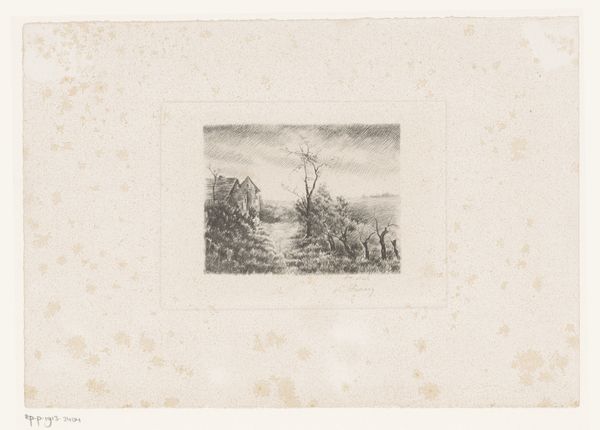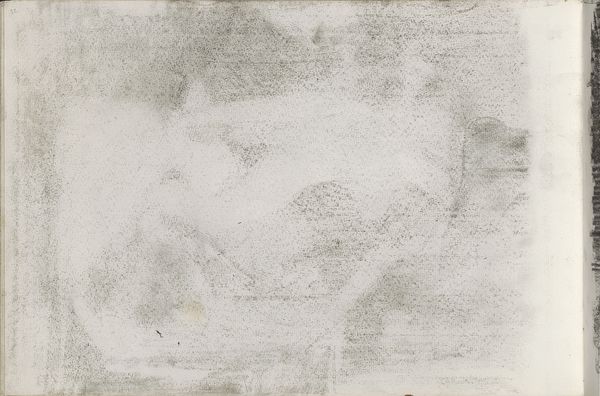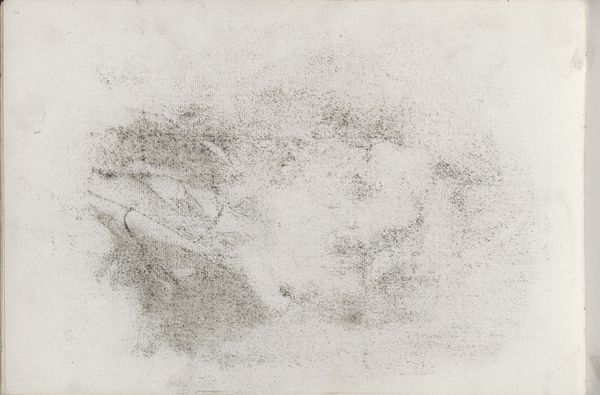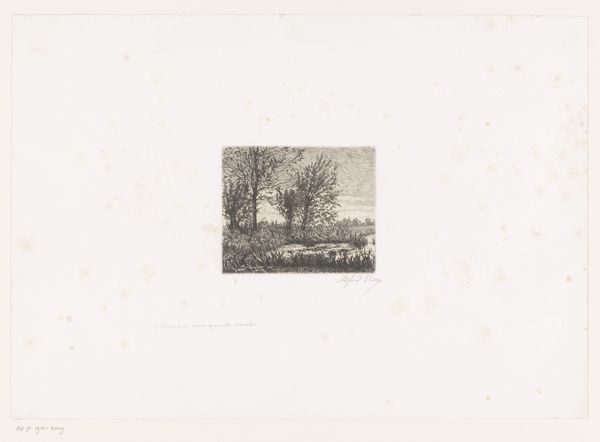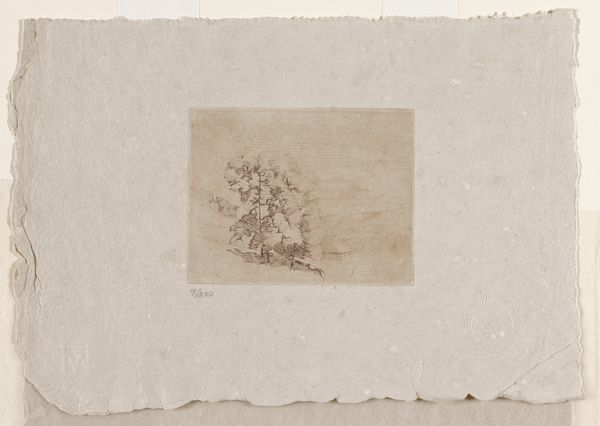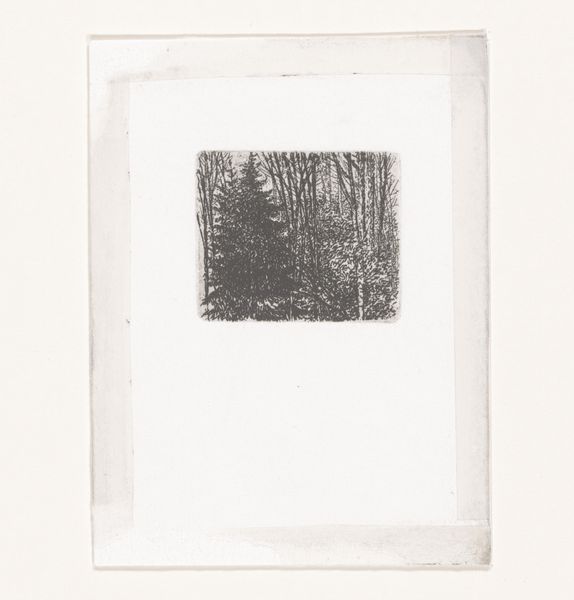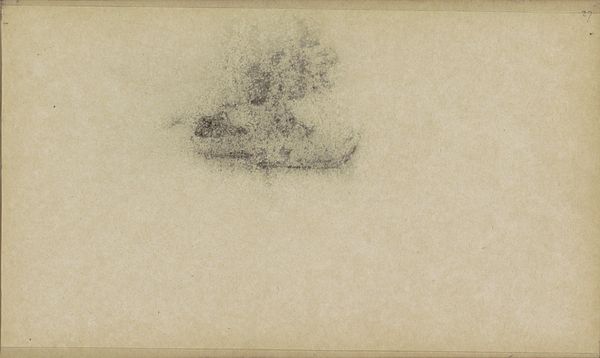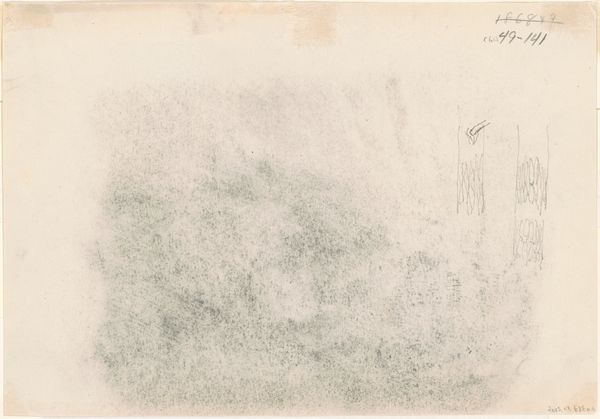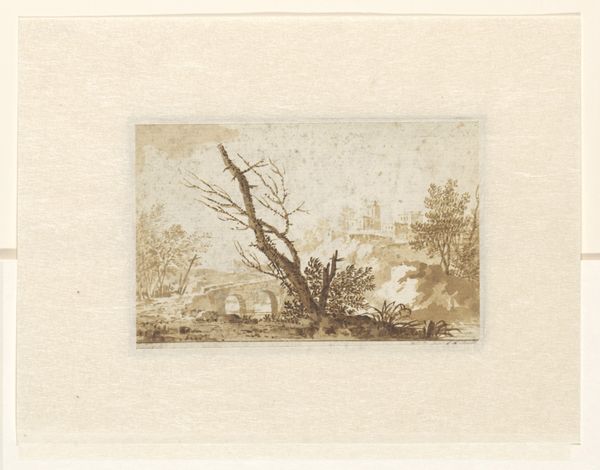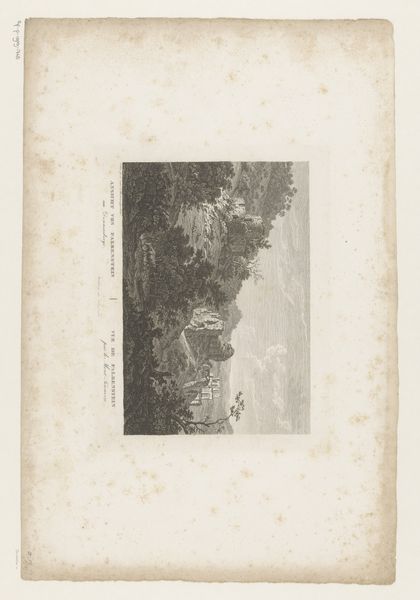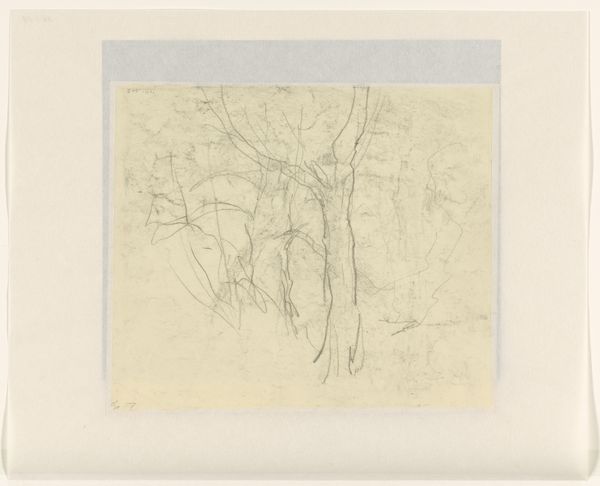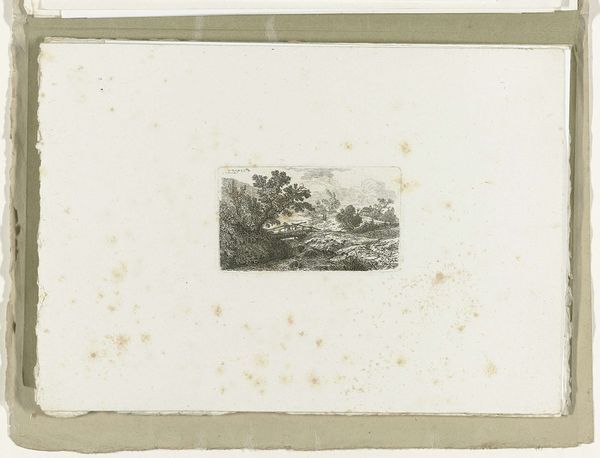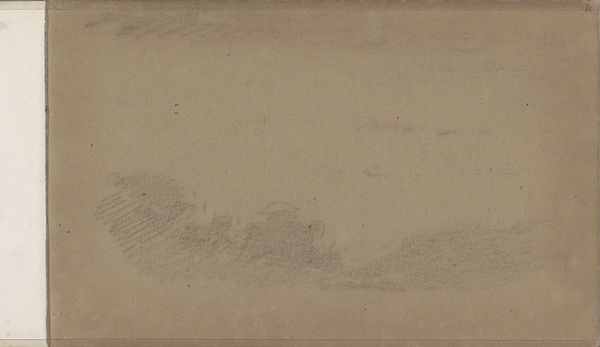
Dimensions: 3 3/8 x 4 3/8 in. (8.57 x 11.11 cm) (plate)7 3/4 x 11 in. (19.69 x 27.94 cm) (sheet)
Copyright: Public Domain
Curator: Looking at this print, I'm immediately struck by its quiet, almost melancholic mood. There's a hazy softness to the lines. Editor: Precisely. What we see here is Emil Carlsen's "Connecticut Landscape," likely from the late 19th century, housed here at the Minneapolis Institute of Art. It's an etching, a process that allows for incredible detail, despite the overall muted tonality. Curator: The composition leads the eye so well. That diagonal sweep of the snow-covered hill, and then those stark, almost skeletal trees silhouetted against the light. It’s a study in contrasts, though understated. I'm wondering what about the conditions of art making informed Carlsen's aesthetic restraint? Editor: During this period, etching saw a revival fueled by the Etching Revival movement. Artists looked back to earlier printmakers like Rembrandt, but with a fresh perspective that reflected growing industrialization, alongside the conservation movement. This scene probably resonated with people's yearning for unspoiled nature in the face of societal change. Curator: Thinking about the etcher’s hand at work—consider how the artist would create such soft tonal shifts. It's not about harsh lines, it's about the layering and depth of the aquatint. This print's reliance on subtle shading creates depth through variation, allowing us to "read" the landscape with tonal information. The landscape and ground are also oriented at angles that create interesting dynamics. Editor: And beyond technique, there's something to be said for how artists like Carlsen visualized a "usable past." Etching became a medium with links to commercial endeavors like illustration and book production as fine art grew, making art available to middle-class audiences interested in art as a visual medium as much as social expression. Curator: Agreed. There's also this inherent connection, in a way, back to nature itself –the etching plate mimicking, even recording, the topography and qualities of light Carlsen observes, even if the imagery is oneiric. Editor: Precisely, giving the work its distinct and timeless appeal beyond what history may give it.
Comments
No comments
Be the first to comment and join the conversation on the ultimate creative platform.
